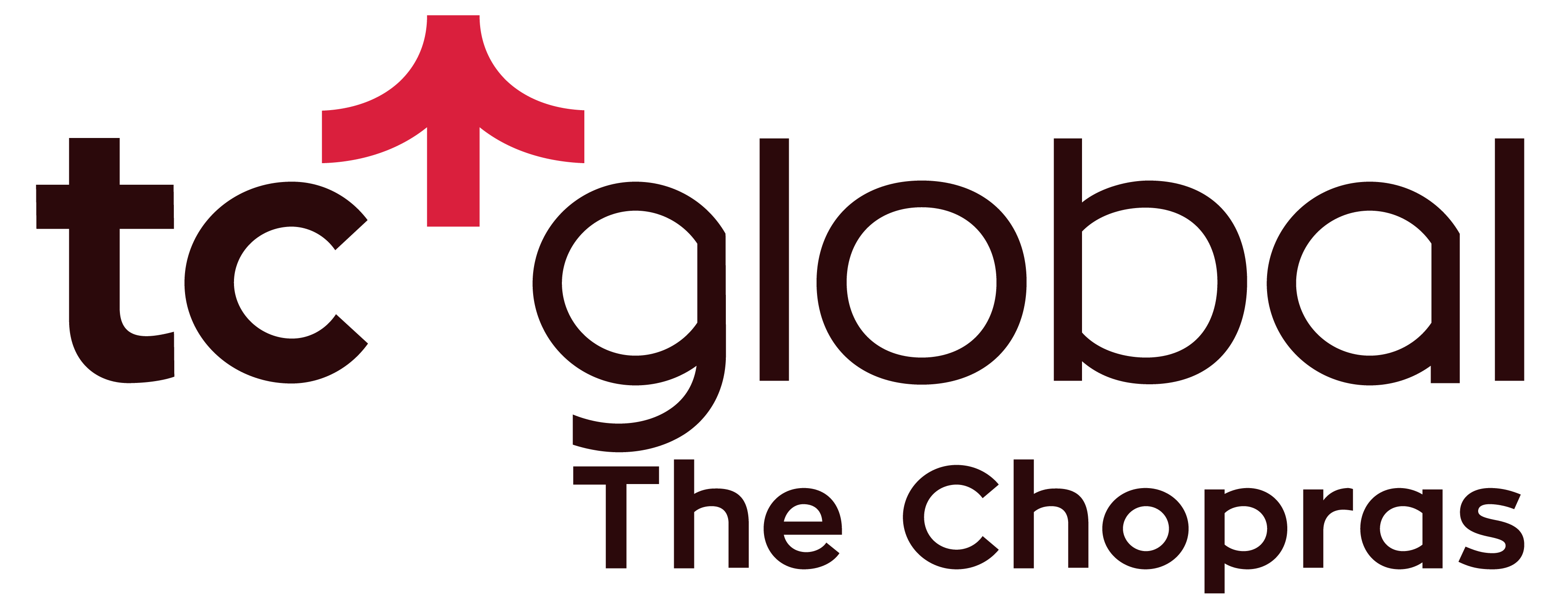When comparing the top Ivy Leadgue universities of American higher education, a debate of Yale vs Harvard is a given. Renowned worldwide for their academic excellence, research opportunities, vibrant student life and a history that goes back to the colonial United States, it is not a simple task choosing one over the other. So, Yale University vs Harvard University – how do they compare? Keep reading to find out more.
Table of Contents
Yale vs Harvard: An Overview

Yale and Harvard, along with Princeton, Columbia, Cornell, Dartmouth, University of Pennsylvania, and Brown University form the Ivy League in the northeastern part of the United States. Two top universities in the world, comparable to Stanford and MIT, Yale and Harvard, have a lot in common, along with a few key distinctions.
While Yale is one of the top 10 universities for many subjects, Harvard is the world number 1 for multiple fields of study. Yale’s emphasis is primarily on liberal arts, while Harvard is more comprehensive, focusing on both liberal arts and STEM. Based on the student population distribution, it becomes apparent that Harvard focuses more on graduate studies than Yale.
When looking at their campus locations and cultures, Harvard is more urban and cosmopolitan when compared to the more contained, suburban ethos of Yale University. In spite of their similarities and differences, both are world class cutting edge research universities with an immense alumni network and famous alums who have made their marks in history.
Brief History and Background
Yale University
Set up in 1701 as the Collegiate School in Saybrook, Connecticut, Yale University (nicknamed the Bulldogs, Yalies, and Elis) is the fourth oldest university in the USA. When it originally opened, the mission of the college was to educate students for public employment in the Church and the Civil State, in the tradition of European liberal arts education.
In 1716, the campus moved to New Haven, CT, and the school was officially renamed Yale College in 1718 in honour of Welsh merchant Elihu Yale, who donated over 400 books and his proceeds from the sale of goods to the college.
Today, over 300 years later, Yale has grown substantially in size, with a comprehensive range of undergraduate, graduate, professional, and doctoral programs. It ranks 5th in the country (US News and World Report) and 23rd globally (QS World University Rankings). With an annual student population of over 13,000, the university is known for its excellent academics and research standards, notable alumni, and contributions to science, technology, society, and culture.
Harvard University
The oldest institution of higher education in the United States, Harvard University (nicknamed Crimson) is a private Ivy League research university located in Cambridge, Massachusetts. Set up in 1636 as Harvard College under the authority of the Massachusetts colonial legislature, it is most renowned for its enduring history of innovation in higher education
With a reputation that rivals Oxford and Cambridge in the UK, Harvard has three main campuses: the main Cambridge campus centred on Harvard Yard, an adjoining campus across Charles River in the Allston neighbourhood of Boston, and the medical campus in Boston’s Longwood Medical Area.
Ranked 3rd in the country by US News and World Report and 4th in the world by QS World University Ranking, Harvard is among the most selective and elite schools to get into. World-renowned for its faculty, state-of-the-art resources, and individualized instruction, the name is synonymous with limitless opportunities for its students.
Key Statistics and Rankings
Here is a table comparing the key stats and ranks of the two universities.
| Yale | Harvard | |
| Campus | New Haven, CT | Cambridge, MA |
| Nickname | Bulldogs, Yalies | Crimson |
| U.S. News National Rank 2024 | 5 | 3 |
| QS World University Rank 2025 | 23 | 4 |
| Undergraduate Student Body | 6,749 | 7,063 |
| Graduate Student Body | 5,344 | ~ 18,200 |
| % of International Enrollment | 30% | 26.8% |
| Average Acceptance Rate | ~ 4% | 3% |
| Student-to-Faculty Ratio | 6:1 | 7:1 |
| Number of Undergraduate Programs | 80+ majors and over 2,000 courses | 3,700 courses in 50 fields of study |
| Number of Graduate Programs | 73 departments and programs | 134 graduate and 32 professional degrees |
| Research Expenditure | Over $1 billion | Over $1 billion |
| Number of Division I Teams | 35 | 42 |
| Number of Clubs and Student Org.s | 500+ | 450+ |
| Colours | Yale Blue and White | Crimson, White and Black |
Yale vs Harvard: Academic Comparison

For a prospective student, one key area of comparison when it comes to Harvard vs Yale is academics. The undergraduate or graduate courses that they offer, their choices and flexibility, ranking, degrees and class sizes, academic calendars, research facilities, and budgets can become important factors in deciding which college is best suited for you.
Undergraduate Programs
Harvard College and Yale College: One of the key points to understand is the distinction between Yale and Harvard Universities and their respective colleges. They are not synonymous and cannot be used interchangeably. Yale College is the undergraduate school of the much larger Yale University, as is the case with Harvard. Therefore, students, on completion of their high school diploma, can apply to Harvard College or Yale College, for their bachelor’s courses.
In terms of programme focus areas, Yale is more renowned as a liberal arts school, with a reputation for its humanities, social sciences, and pre-law courses, while Harvard’s focus is more comprehensive, with a global reputation for both liberal arts and STEM-based programs. Yale has more undergraduate majors (80+) than Harvard (50+).
However, both Yale and Harvard are known for offering interdisciplinary programs and varied concentrations for students to explore niche areas of study.
Standardized Test Scores: Unlike most American colleges that have continued with their test-optional policies since the pandemic, both Harvard College and Yale College now require applicants to submit SAT/ ACT/ IB/ AP scores when applying for their undergraduate programs.
The average SAT score for students to be admitted into Yale ranges between 1480 and 1580, while the median score is around 1520 for Harvard. ACT scores for both schools range between 33 and 35.
Core Curriculum: Harvard and Yale do not function the same way when it comes to the core curriculum. All students of Harvard College are required to complete four General Education courses, one from each category – Aesthetics and Culture; Ethics and Civics; History, Societies Individuals; and Science and Technology in Society. In addition, students must also complete the College’s requirements in the following areas – language, expository writing, distribution, and quantitative reasoning with data.
In contrast, instead of a core curriculum or general education requirements, Yale has something called distribution requirements. This ensures that all graduates of Yale College have an acquaintance with a broad variety of fields of inquiry and approaches to knowledge. Besides the chosen major, this policy requires students to choose a certain number of courses in the humanities, social sciences, sciences, quantitative reasoning, and writing.
Class Sizes: The difference in class sizes and student-to-faculty ratio is also nominal between the two top Ivies. About 72% of courses have fewer than 20 students at Yale while this number is around 76% at Harvard. The student teacher ratio among the Bulldogs is 6:1 compared to the Crimson 7:1.
Popular Majors:
| Yale | Harvard |
|
|
Graduate Programs
Graduate Program Options: At the outset, Harvard has a better name and higher rankings for its graduate level programs while Yale is more sought after for its undergraduate education. Although Yale has 14 grad schools, they offer fewer programs (around 75) when compared to the 160+ graduate and professional degrees offered by Harvard’s 12 graduate level schools.
Even when looking at the student body, Yale has a grad student population of around 5,344 while Harvard’s is over three times that size at over 18,200. Except for theatre and music, Harvard has been consistently ranked higher than Yale in all areas of study, although the difference between ranks is nominal. Despite both schools having numerous professional schools and options, Harvard Law, Harvard Business School and Harvard Medical School are some of the foremost in the world.
Admissions: Both universities are known for their highly competitive admissions, with students from all over the world applying. Their acceptance rates are some of the lowest in the world ranging between 3 and 4%.
The minimum admission criteria in both universities include a valid baccalaureate degree from a recognised university (GPA varies with departments), standardized test scores (GRE/ GMAT), a strong application form with a well-written Statement of Purpose (SOP), relevant work experience (for some courses), and English proficiency test scores (for international students).
Top Graduate Programs:
| Yale | Harvard |
|
|
Global Reputation: As mentioned earlier, both universities are world renowned and create numerous opportunities for their graduates across continents. However, at the graduate level (masters and doctoral studies), Harvard has more options and a greater reputation when compared to Yale. Be it the Graduate School of Arts and Sciences, the B-School, Harvard Law or Medicine, the Crimson is better known for graduate studies than its New Haven competitor.
Overall and Subject Ranking
| Yale University | Harvard University |
| Overall Rank US News 2024: 5 | Overall Rank US News 2024: 3 |
| Times Higher Education WUR: 10 | Times Higher Education WUR: 4 |
| QS WUR 2025: 23 | QS WUR 2025: 4 |
| Subject and Other Ranking (Source: QS Global Subject Rankings 2024) | |
|
|
From the table, it is clear that while Yale enjoys a strong position in global and subject rankings, Harvard consistently ranks at the top for multiple disciplines. That said, any university that is on the global top 10 list is deemed to be on the same tier. When looking at Harvard and Yale in particular, we are essentially splitting hairs. One need not necessarily place too much importance on these metrics but rather focus on the specific departments, their curricula, teaching styles and pedagogies, and what best aligns with your career goals.
Constituent Schools
The different courses at Yale University are offered by the following schools. Except Yale College that awards bachelor degrees, the rest are graduate and professional schools.
- Yale College (Undergraduate College)
- Graduate School of Arts and Sciences
- School of Architecture
- School of Art
- Divinity School
- David Geffen School of Drama
- School of Engineering & Applied Science
- School of the Environment
- Jackson School of Global Affairs
- Yale Law School
- School of Management
- School of Medicine
- School of Music
- School of Nursing
- School of Public Health
Harvard University is composed of the following schools of which only Harvard College offers bachelor degree programs.
- Harvard College (Undergraduate College)
- John A. Paulson School of Engineering and Applied Sciences (SEAS)
- Kenneth C. Griffin Graduate School of Arts and Sciences (GSAS)
- Harvard School of Dental Medicine
- Harvard Business School
- Harvard Graduate School of Design
- Harvard Divinity School
- Harvard Graduate School of Education
- Harvard Kennedy School (of public policy)
- Harvard Law School
- Harvard Medical School
- T.H. Chan School of Public Health
- Harvard Extension School
- The Radcliffe Institute for Advanced Study
Research Opportunities
Both Harvard and Yale are world leading R1 research universities that encourage their students to push the boundaries of their disciplines. Both schools spend over $1 billion for research every year.
One of the premier research institutions in the world, Harvard University has always been at the frontier of scientific inquiry and innovation. The Faculty of Arts and Sciences alone house over 45 interdisciplinary research institutes and centres.
In addition, the other professional schools have independent research programs. Harvard Law has over 30 research programs and centres while Harvard Medical is known for its world-changing innovations. For example, here are some of the key discoveries from Harvard Medical School – Smallpox vaccine, Anesthesia, Electrocardiograph, Live donor liver transplant, Circadian clock, and the relationships between microbiome and immunotherapy. Harvard is also at the forefront of bioengineering research and collaborates with MIT for genomics research.
Similarly, research opportunities at Yale also abound. The university has consistently demonstrated research excellence in multifaceted areas, ranging from biotechnology and environmental science to pharmaceuticals and quantum computing. The university emphasizes interdisciplinary research, pushing the boundaries of all disciplines. The university is also known for the Yale Peabody Museum of Natural History, which is one of the most significant resources for further study in the natural sciences.
In the field of medicine and health, Yale Cancer Centre and the School of Medicine are doing world-altering research to make healthcare more accessible to all sections of society.
To sum up, both universities foster robust research environments with creative liberty in search of new knowledge. They help students develop a research mindset from the undergraduate level, helping their alumni become leaders and catalysts of change in the world.
Key Dates for Application
In this section, we will be looking at the key dates for application and admission into undergraduate programs (Fall semester) to get a sense of the timeline. Graduate schools have a different timeline. It is also recommended that you verify with the specific department / school that you are applying to, just to ensure they do not follow a different cycle.
| Important Dates | Yale | Harvard |
| Early Action (EA) Deadline | November 1 (Single Choice) | November 1 (Restrictive EA) |
| Regular Admissions Deadline | January 2 | January 1 |
| EA Decision Posted in | Mid – December | Mid – December |
| Financial Aid Application Deadline (Regular Application) | February 1 | February 1 |
| Regular Decision Posted in | April 1 | End of March |
| Deadline to accept offer of Regular admission | May 1 | Early May |
| Average Acceptance Rate | ~ 4% | 3% |
Admission Options to be considered in the Harvard-Yale debate:
- Harvard’s Early Action (EA) pathway is called Restrictive EA, while Yale’s is called Single Choice EA. Essentially, they are both restrictive, wherein you may not apply to an early program at any other private college or university within the United States.
- Both universities do not have the binding Early Decision college admissions pathway.
- Both Yale and Harvard accept either the Coalition Application or the Common Application. However, the university-specific essay must be completed. Yale also accepts the QuestBridge application.
- Harvard’s application fee is $85, while Yale requires $80.
Academic Calendar
Both Harvard and Yale follow a semester system, with the main academic calendar spreading through Fall (August/ September – December) and Spring (January – April/ May). Both universities also have a shorter summer term during which some academic activities take place.
Harvard vs Yale: Campus Life and Environment

Academics cannot be the sole deciding factor when it comes to choosing universities. Other aspects, such as campus locations, the amenities they provide, the extracurricular activities, housing options, and the general culture of the university, are key contributors to the quality of student life, which can make one prefer Yale to Harvard or the other way around.
Location
Yale University is located in New Haven, Connecticut (about 83 miles from New York City), while Harvard is located in Cambridge Massachusetts, a mere six miles from the city of Boston. If you are wondering what is the distance between Yale and Harvard, it is around 133 miles (a 2 hour drive).
Harvard’s proximity to Boston provides its students easy access to a cosmopolitan city with a diverse economy and plenty of opportunities across different industries. The bustle of the Boston Metropolitan area and its population of about 4.9 million also seeps into Harvard University life. The university is also located near the renowned Massachusetts Institute of Technology (MIT), Boston College, and Boston University.
In contrast, New Haven is a smaller, suburban city that is about an hour away from New York and over 2 hours away from Boston. A historic city known for its museums, food, architecture and culture, New Haven is a haven for students who want to study away from the bustle of large cities. Another key advantage of living in a smaller town is that the cost of living in New Haven, CT is about 25 – 30% lower when compared to Cambridge, MA. With both towns located in the northeast, they experience similar climatic conditions with cloudy skies for the majority of the year, with the winters being especially cold and wet.
Campus Size and Facilities
When comparing total holdings, Harvard owns around 5,000 acres in the greater Boston area while Yale owns over 1,100 acres in New Haven. But, the main Harvard campus that grew around Harvard Yard is around 209 acres housing academic and research buildings. The central Yale campus consists of about 340 buildings in 225 acres of university land.
Including the Arnold Arboretum, the Carpenter Center for the Visual Arts, the Collection of Historical Scientific Instruments, the Harvard Art Museums and the Harvard Forest, the university provides numerous extensive amenities for its students. The Harvard Library is the largest academic and private library in the world. Campus life also includes common rooms, study spaces, dining halls, verdant lawns, and athletic facilities.
Similarly, the Yale campus is home to the world renowned Yale University Art Gallery, Yale Centre for British Art, and the Peabody Museum of Natural History. Moreover, the campus features over 1 million square feet of laboratory space, state of the art research facilities, top-notch libraries, residential colleges, dining halls, shopping centres, sports fields, recreational and athletic facilities.
Both universities provide rich and varied experiences, for students to explore interests and passions beyond academics.
Student Activities and Organisations
When it comes to extracurricular activities, both universities have an extensive culture of enabling students to explore other interests beyond academics.
Athletics:
Harvard is home to 42 Division I intercollegiate sports teams that compete in the NCAA and the Ivy League in stunning displays of Crimson pride. Nearly 80% of Harvard undergrad students are involved in some kind of athletics. In addition to the varsity level, the university also has a longstanding tradition of intramural sports that allow students to compete with one another within the university. First-years compete for the Yard Cup, and upperclassmen chase the Straus Cup. Furthermore, Harvard students can also participate in club sports and the numerous recreational fitness options available on campus.
With over 30 men’s and women’s varsity teams, the Yale Bulldogs form some of the most elite and highly competitive teams that participate in NCAA Division I and Ivy League Sports. While the Bulldogs have created a name for themselves in varied sports, their rivalry with Harvard when it comes to football is a nationwide sensation. Besides competition at the university level, Yale also supports over 40 club sports (most co-ed); and undergraduate and graduate intramural programs. The university’s athletic facilities include a golf course and centers for tennis, polo, sailing, ice hockey, and more.
Student clubs and organizations:
Besides sports, Yale University has over 500 student organizations, many of which are focussed on academic disciplines and career development. The university encourages prospective employers and recruiters to connect with students through these clubs. Students have the option of taking part in varied campus organizations, creating a rich student life beyond the walls of the classrooms.
Similarly, Harvard houses over 450 clubs that can be divided into 13 categories ranging from Academic and pre-professional, Creative and Performing Arts, to Public Service and Religion and Spirituality. The university also conducts a Student Organization Fair, an annual tradition that takes place the first week of class, for the freshmen to get to know options available.
Housing and Accommodation
Yale: All undergraduate students at Yale College are accommodated in one of the 14 residential colleges on campus. Students remain affiliated to these colleges for the 4-year study period or the entire duration of their stay on campus. Yale requires both first and second year students to live on campus. On the whole, about 85% of Yale undergraduates live on campus during their 4-year study period.
The Graduate Housing Office is the office responsible for providing housing for graduate and professional students on or around campus. There are a limited number of on-campus accommodation for graduate students ranging from dorm rooms to three bedroom apartments. However, many grad students prefer commuting from off-campus housing in New Haven or even nearby towns.
Harvard: For undergraduate students at Harvard College, accommodation is provided in dorms with shared suites adjacent to Harvard Yard with a majority of meals eaten in Annenberg Hall. First-year students are required to live on campus. Divided into “The Houses”, they serve as the foundation for the undergraduate experience at Harvard College. 98 per cent of all undergraduates live in one of the twelve residential Houses.
Graduate students have access to housing options on campus in Harvard-owned properties or off campus in the Cambridge and Boston area. Harvard University Housing (HUH) is the office that offers housing and real estate services to the University’s graduate students, faculty, and employees. The university owns about 3,000 units ranging from studios to four bedrooms, all located conveniently near Harvard’s graduate and professional schools.
Both universities also have over a dozen dining halls with numerous meal choices. They are also known for their food-related events, ranging from street food to global gastronomical experiences. Both schools support and encourage students to participate in food sustainability and food literacy initiatives as well. The average figures denoting the cost of housing and food are mentioned in the following section, along with other expenditures.
Yale vs Harvard: Financial Aspects

Another major point of discussion when it comes to Yale vs Harvard is the cost involved. The cost of attendance (tuition), additional expenses such as books, student fees, insurance and housing must be taken into account before making a choice.
At the outset, both are privately owned universities and, therefore, do not offer any subsidised rates for local residents. Moreover, the general cost of tuition is higher than that of public universities. That said, both universities are known for their highly inclusive financial aid programs.
| Annual Rates | Yale | Harvard |
| Tuition (Bachelor’s) | $67,250 | ~ $57,000 |
| Tuition (Master’s, not including professional programs) | $49,500 | $55,000 – $64,000 |
| MBA Tuition | $85,400 | $76,410 |
| Housing (On-Campus) | $11,300 | $12,922 |
| Food | $8,600 | $8,268 |
| Off-Campus Housing | $9,000 – $12,000 | $8,300 – $30,000 |
| Types of Financial Aid | 1. Yale Scholarships (only need-based) 2. Merit-based awards (External) 3. Entitlement awards (Federal/ State) 4. Graduate Awards |
1. Scholarships & Grants 2. Outside Awards 3. Student Employment 4. Loans(only need-based) |
| International student scholarships |
|
|
| Estimated average grant for an aid student | $50,000 – $68,000 | $67,585 |
| Admission Decisions | Completely need-blind | Completely need-blind |
| Demonstrated Need Cover | 100% (Families with income less than $75,000 will not have to pay tuition) | 100% (Families with income less than $85,000 will not have to pay tuition) |
Here are a few important points to be kept in mind.
- As private Ivy League Universities, the tuition rates at both universities are much higher compared to other private or public universities. That said, both have numerous scholarship and financial aid options. It is important to research specific scholarship options for the program/ department that you are applying for.
- The tuition fees are average figures, calculated for a typical academic year of 9 months. The fee will be higher should you choose to take extra courses in the summer months.
- The tuition fee amounts in the table are indicative of only the cost of attendance. They do not include books, student health insurance and other expenses. Student insurance alone can cost between $3,000 – $7,000 a year.
- Both universities emphasise need-based scholarships. Merit scholarships are typically funded by external sources. Neither university offers athletic scholarships.
- The financial need requirements of international students are met in the same way as it is for domestic students.
- Yale Scholarships are need-based aid available only for undergraduate students. Graduate students must look into specific department websites for aid.
- International students are not eligible for any state or federal aid.
Yale vs Harvard: Career Prospects and Alumni Network

In this section, let us compare the post-graduation opportunities available to the students of Harvard and Yale. Considering their reputation and their academic ranking, the biggest problem for a Yale or a Harvard graduate is to make a choice among the numerous options that their university degree will open up for them. The academic rigour and culture of research in these two universities create a pedigree that recruiters often compete to get for their organisations.
Employment Rates
As one of the top colleges for graduate employment in the US, according to the Times Higher Education ranking, Harvard, ranked 4th in the US, has an employability rate of 91 – 96%, depending on the school, within six months of graduation. By the same metric, Yale stands 6th in the country for graduate employability, ranking behind Harvard and Princeton. A diploma from the Ivies is the closest to guaranteed competitive employment, irrespective of the discipline.
Notable Alumni
Both universities have vibrant alumni associations that extend worldwide. Harvard’s alumni network supports over 400,000 people who bleed crimson in over 200 countries while Yale has over 130,000 living alums across the globe.
If you are comparing Nobel Laureates as a mark of academic excellence, Harvard is associated with over 160 Nobel Prize Winners (over 50 of them currently associated with the university), while about 65 are associated with Yale.
Other Notable Alumni from Harvard
- Barack Obama, Former President of the United States
- Mark Zuckerberg, CEO, Meta
- Bill Gates, Founder, Microsoft
- John F Kennedy, Former President of the United States
- Ratan Tata, Industrialist and philanthropist
- Robert Oppenheimer, Physicist
- Helen Keller, Author and activist
- Ruth Bader Ginsberg, Associate Justice of the Supreme Court
Notable Alums of Yale
- George H W Bush, Former President of the United States
- William Howard Taft, Former President of the United States
- Bill and Hillary Clinton, Former President and First Lady of the United States
- Meryl Streep, Actress
- Anderson Cooper, Journalist
- Lupita Nyong’o, Actress
- Indra Nooyi, Former CEO of PepsiCo
Career Services
In both universities, the career centers for strategy and success assist their students to gain practical experience, build networks and communicate their aptitudes and skill sets to prospective employers. They also play an instrumental role in building leadership skills and specialised skills that are essential to a workplace.
In both universities, the career centre connects students to internship opportunities and prospective employers through seminars, job fairs, and numerous other on-campus events. Their goal is to clarify career aspirations, identify opportunities, and offer support at every stage of career development.
Yale vs Harvard: Conclusion

Choosing between Harvard and Yale involves considering various factors such as academic strengths, campus life, financial implications, and career prospects. Both universities offer unparalleled opportunities, but your decision should align with your personal and professional goals.
As Ivy League schools, Harvard and Yale have more similarities than differences. As two of the oldest universities in the United States, they have a friendly rivalry, be it in academics, research, or athletics.
- With both universities belonging to the prestigious Ivy League group, they share a similar standing and a global reputation of being two of the top most universities in the world.
- Yale is more sought after for undergraduate education, especially in the liberal arts while Harvard’s reputation is more comprehensive. Harvard is home to some of the topmost grad schools in the world and consistently ranks higher than Yale.
- Both universities are especially known for having some of the lowest acceptance rates, making their admissions some of the most selective and competitive in the world.
- The student body at Yale is composed more of undergraduate than grad students. Even then, the total student body of Yale is significantly smaller than Harvard’s, despite the extensive campus. Harvard, in contrast, has an immense graduate student population.
- Yale’s programs in music, and theatre, and literature are some of the best in the world.
- Looking at locations, Yale is decidedly more suburban and contained when compared to the urban Boston-Cambridge neighbourhood in Massachusetts. However, since both are situated in the northeastern part of the USA, they have relatively similar climates.
- Both universities offer varied scholarships and housing options for their students. The key difference is that Harvard requires freshmen to stay on campus while Yale requires both first and second years to live in on-campus housing.
- Both are world class research universities with annual research budgets exceeding over $1 billion.
Considering their similarities, the ultimate call rests on whether the course curriculum and the learning outcomes meet your career plans. The most significant part of your research is to compare courses, syllabi, electives, faculty and research facilities of your preferred degree program, speak to current students, and then decide depending on which school better suits your needs.
We understand that becoming an international student can be very thrilling, but the prep and paperwork of it all can get overwhelming. The easiest way to reduce your stress is to sign up with TC Global.
We simplify international education, learning, and mobility through connecting students, universities, and a global community on a single platform where there are over 1000+ education providers and over 80,000+ courses.
Our platform enables students to study anywhere in the world in just a few steps. From search and discovery and finding the right course fit for you, to applications, visas and departure – we see you through it all.
To move forward with us, download our app or visit tcglobal.com and sign in to create an account on our student platform and onboard with us in quick, easy steps.! ?
Then simply set up a visit Calendly.com/tcglobal to pick a Relationships Team closest to you and choose a slot to meet with a Relationship Member. Be it Yale vs Harvard or any such debates, our experts will be with you every step of the way to help you decide.
Let’s shape your future together.
FAQs
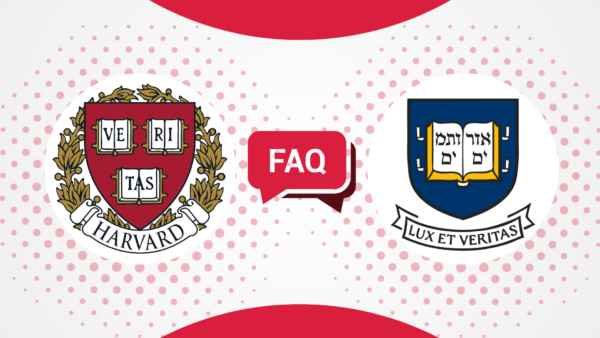
Is Harvard the No 1 University?
One of the foremost universities in the world, Harvard ranks 4th in the world according to the metrics published by QS World University rankings 2025, after MIT, Imperial College London, and the University of Oxford. It ranks 3rd in the country after Princeton and MIT according to US News and World Report. Harvard also ranks world number 1 in various subject rankings.
Is Yale University better than Harvard?
By sheer ranking alone, Harvard stands ahead of Yale. Yale is generally considered better for its undergraduate programs, courses in liberal arts, literature, theater, music, and law.
Is Yale the best Ivy League?
Among the Ivies, Harvard, Yale and Princeton are generally considered the most prestigious.
Is Yale expensive?
Yale’s undergraduate tuition is around $67,000. The American national average tuition for bachelor’s degrees is around $44,000. Yale’s position as an Ivy and a privately owned institution makes it more expensive.
What GPA do you need to go to Yale?
For both Yale and Harvard, a minimum of 4.0 or higher on a scale of 5 is required, considering how competitive their admission processes are.
Can I get a 100% scholarship to Yale or Harvard?
Both Yale and Harvard meet 100% demonstrated financial need of students, irrespective of their immigration status. Demonstrated financial need is the difference between the Cost of Attendance and your Expected Family Contribution. For families earning less than $75,000 per annum ($85,000 for Harvard), family contribution is zero.
Can I join Harvard or Yale after the 12th?
Yes, you can apply to Harvard or Yale College for any of their undergraduate programs. It requires a competitive application and essay, excellent academic credentials, and a clear display of your personal and professional values that align with the institution.
You May Also Like
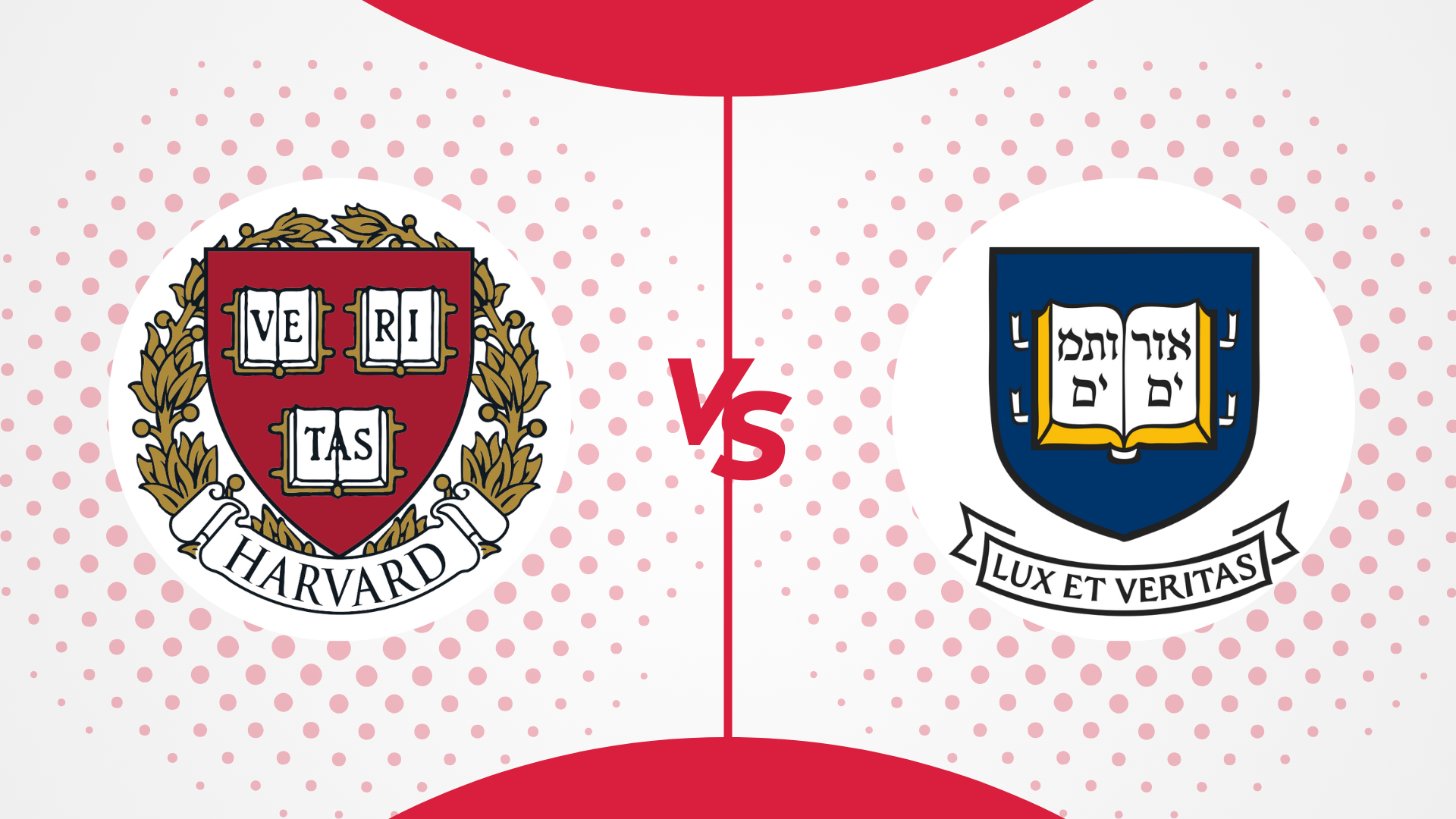
Compare more universities in USA
-
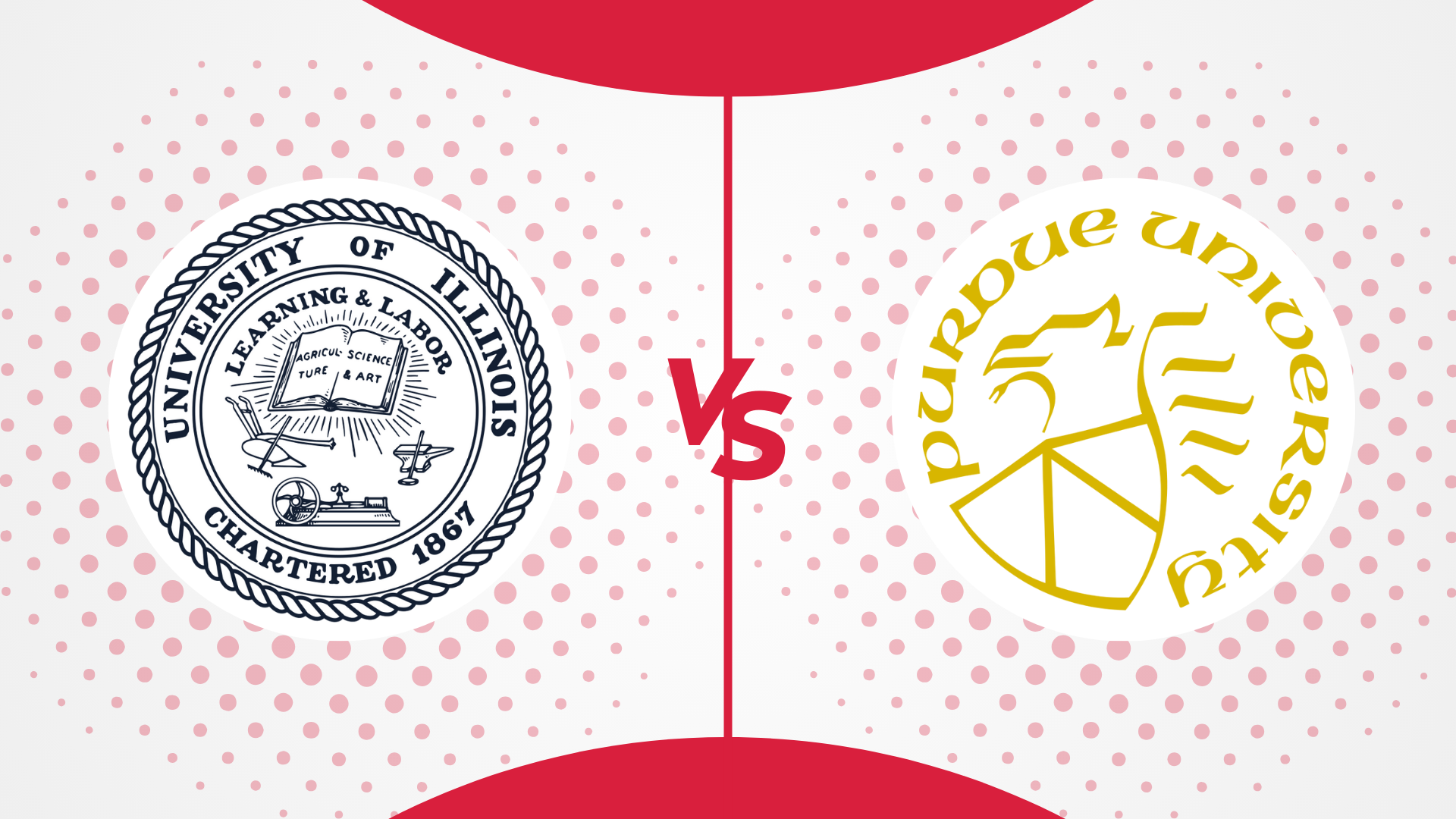
Purdue vs UIUC: How Do They Compare in 2025?
December 16, 2024 -

Tufts vs BU: How Do They Compare in 2025?
December 16, 2024 -
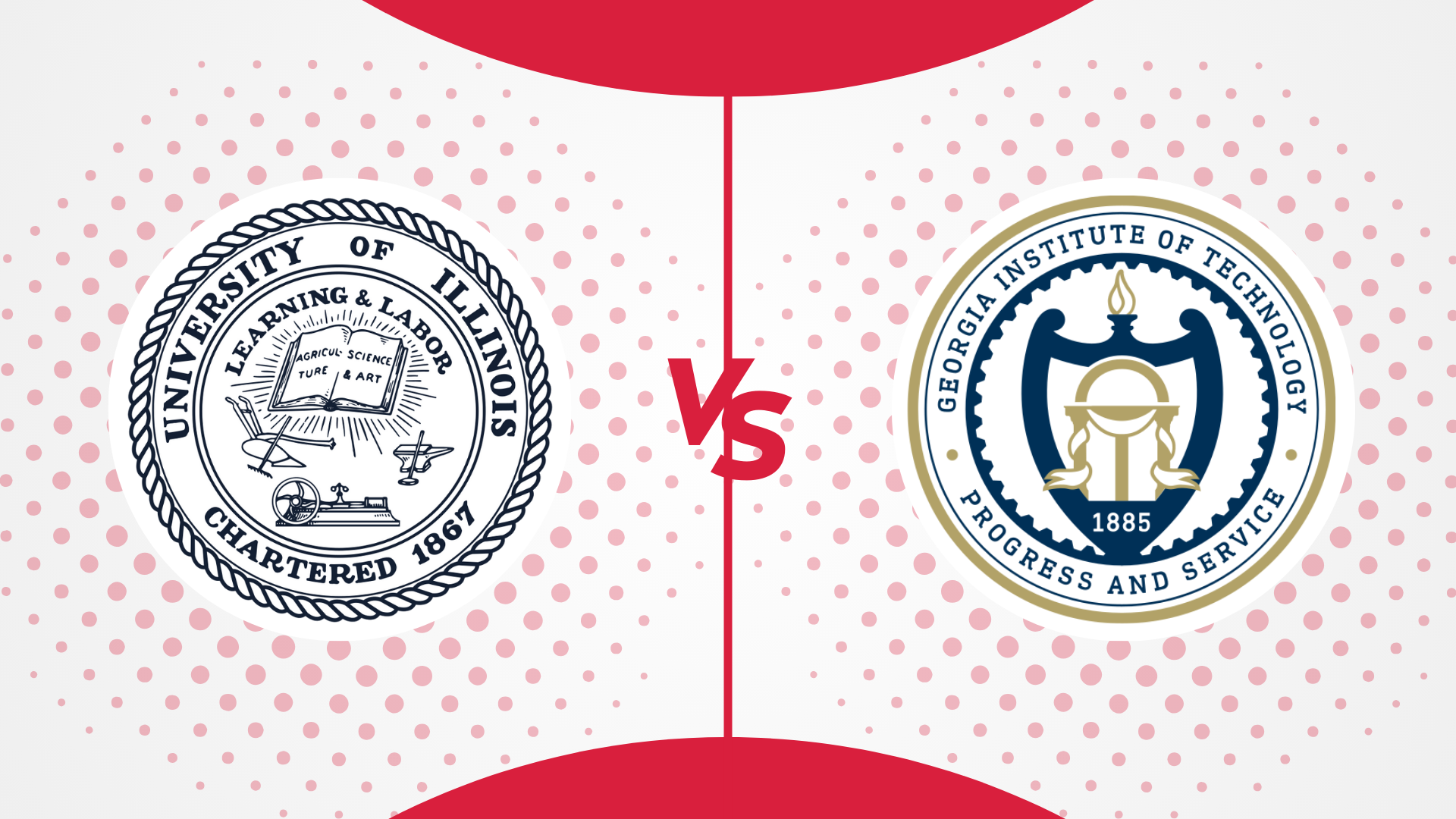
UIUC vs Georgia Tech: How Do They Compare in 2025?
December 3, 2024 -

Georgia Tech vs UT Austin: How Do They Compare? [2025]
September 24, 2024 -

UC Davis vs UC Irvine: How Do They Compare in 2024
September 10, 2024 -
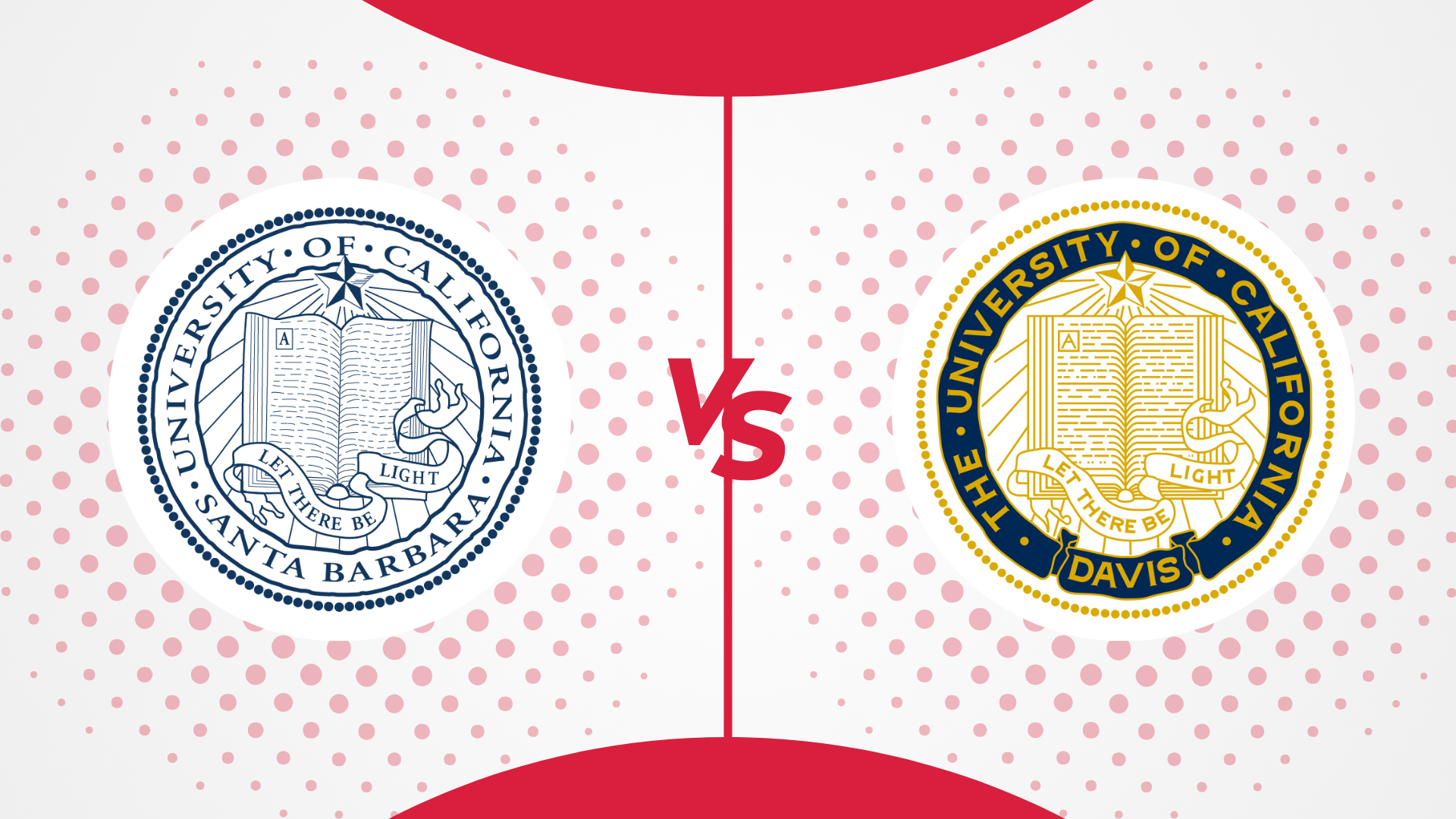
UC Santa Barbara vs UC Davis: How Do They Compare? [2024]
August 30, 2024 -
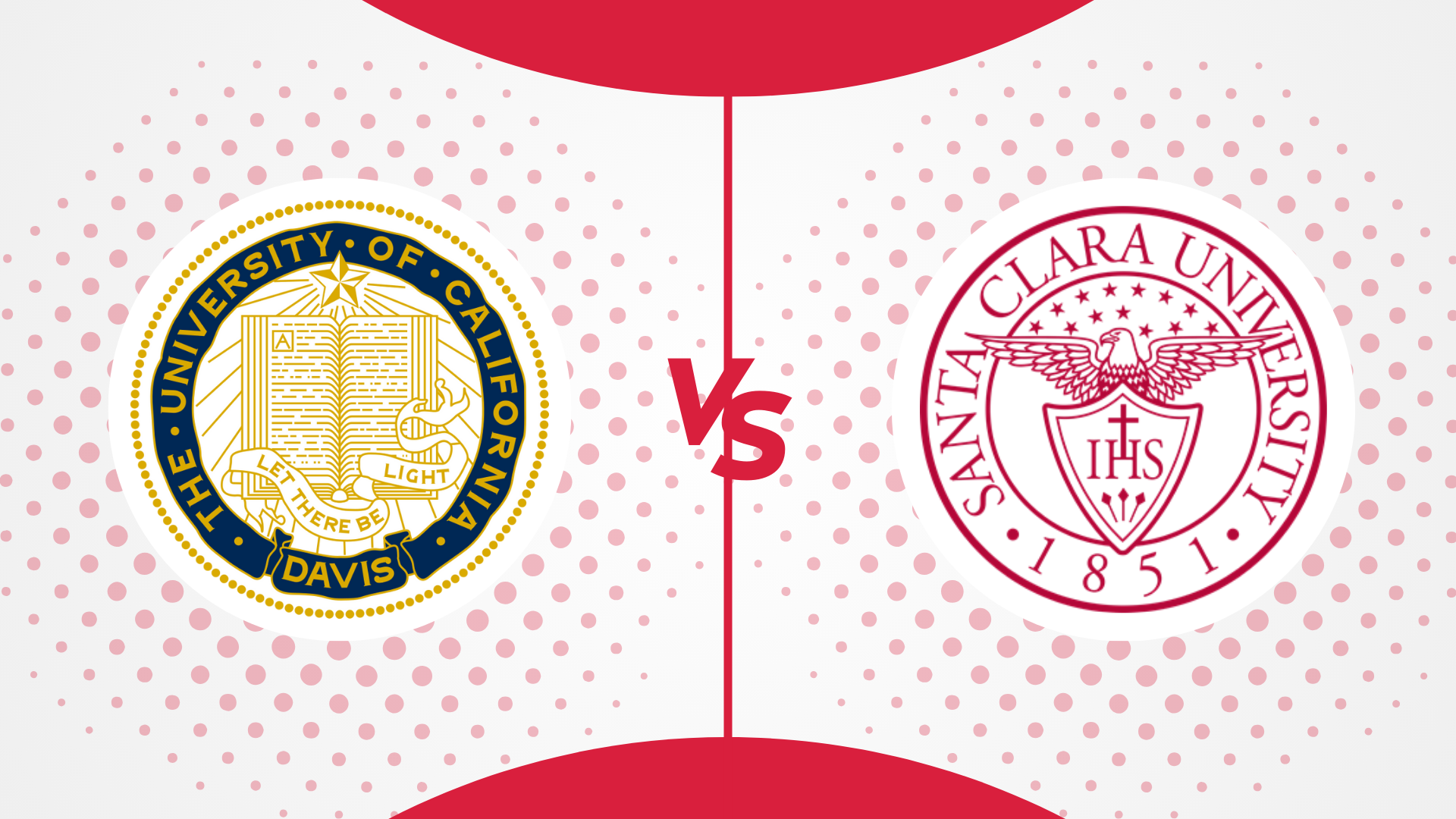
UC Davis vs Santa Clara University: How Do They Compare? [2024]
August 23, 2024 -

University of Chicago vs Northwestern University: How Do They Compare
August 20, 2024 -

Georgia Tech vs MIT: How Do They Compare? [2024]
August 7, 2024 -

Caltech vs MIT: How Do They Compare [2024]
August 2, 2024 -

MIT vs Harvard: How Do They Compare [2024]
July 27, 2024 -

Cornell vs Harvard: How Do They Compare? [2024]
July 27, 2024 -

Harvard vs Princeton: How Do They Compare [2024]
July 16, 2024 -
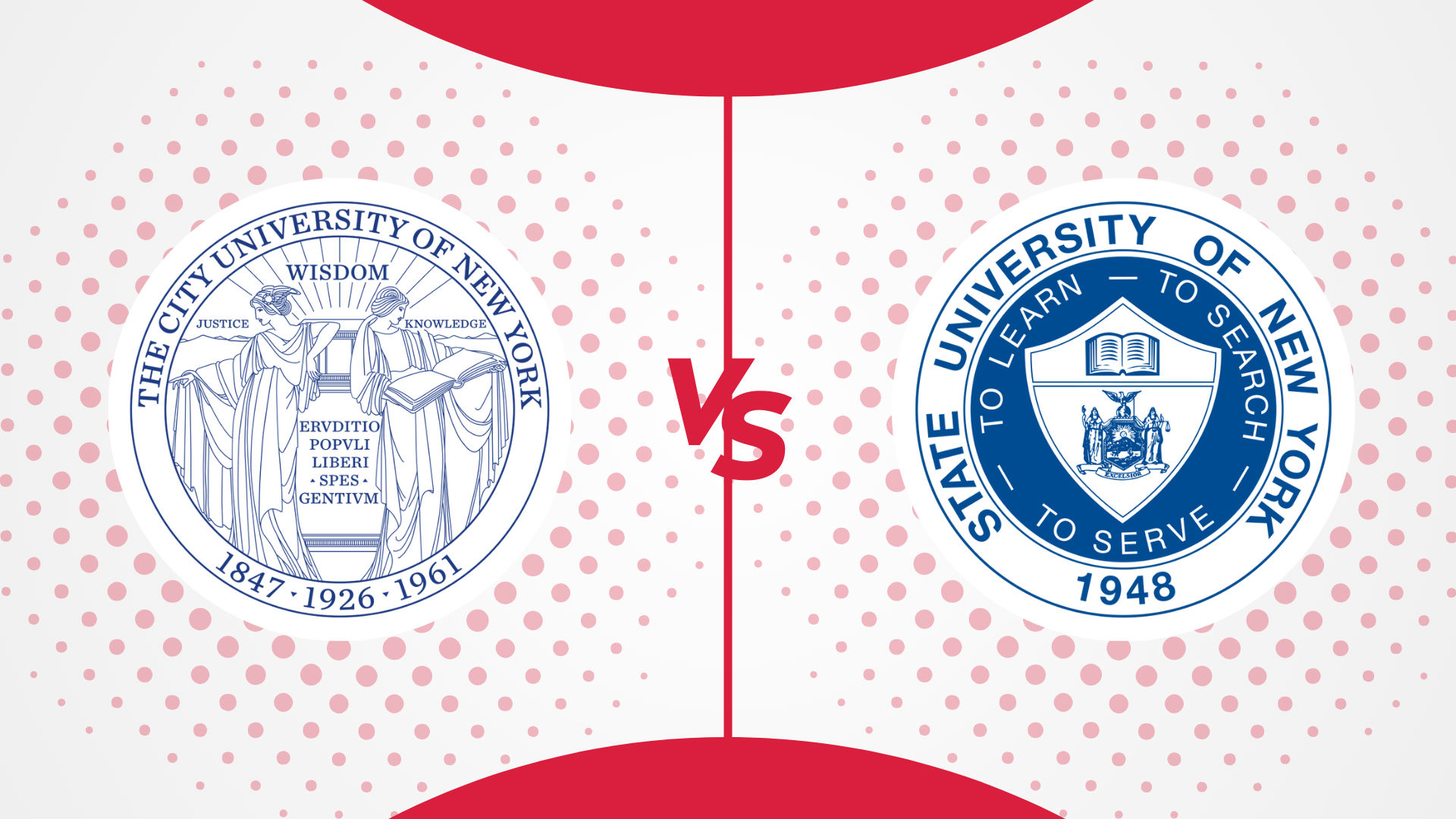
CUNY vs SUNY: Which One is For You in 2024
July 9, 2024 -
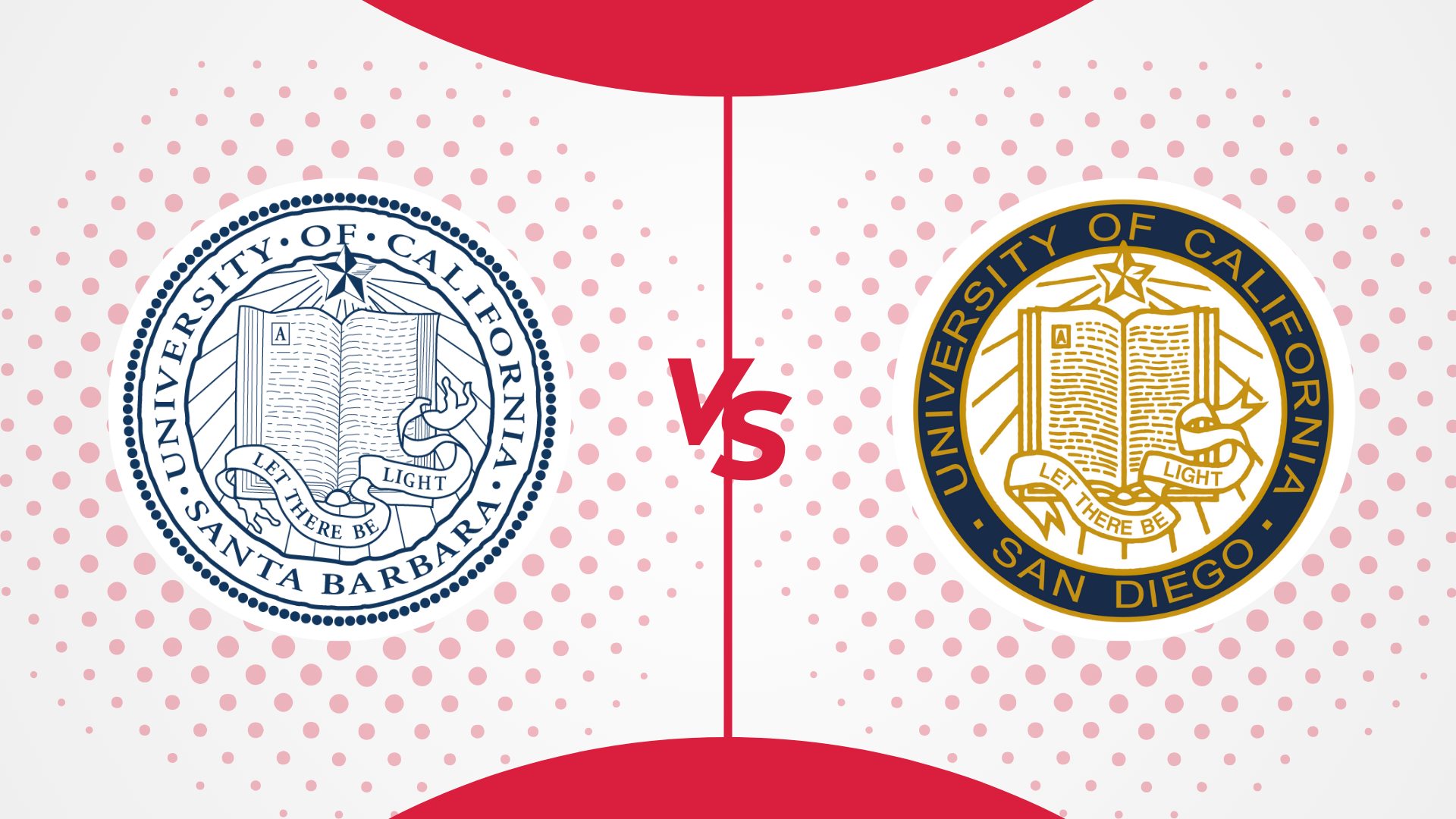
UCSD VS UCSB: Which One is Better For You in 2024
July 9, 2024 -
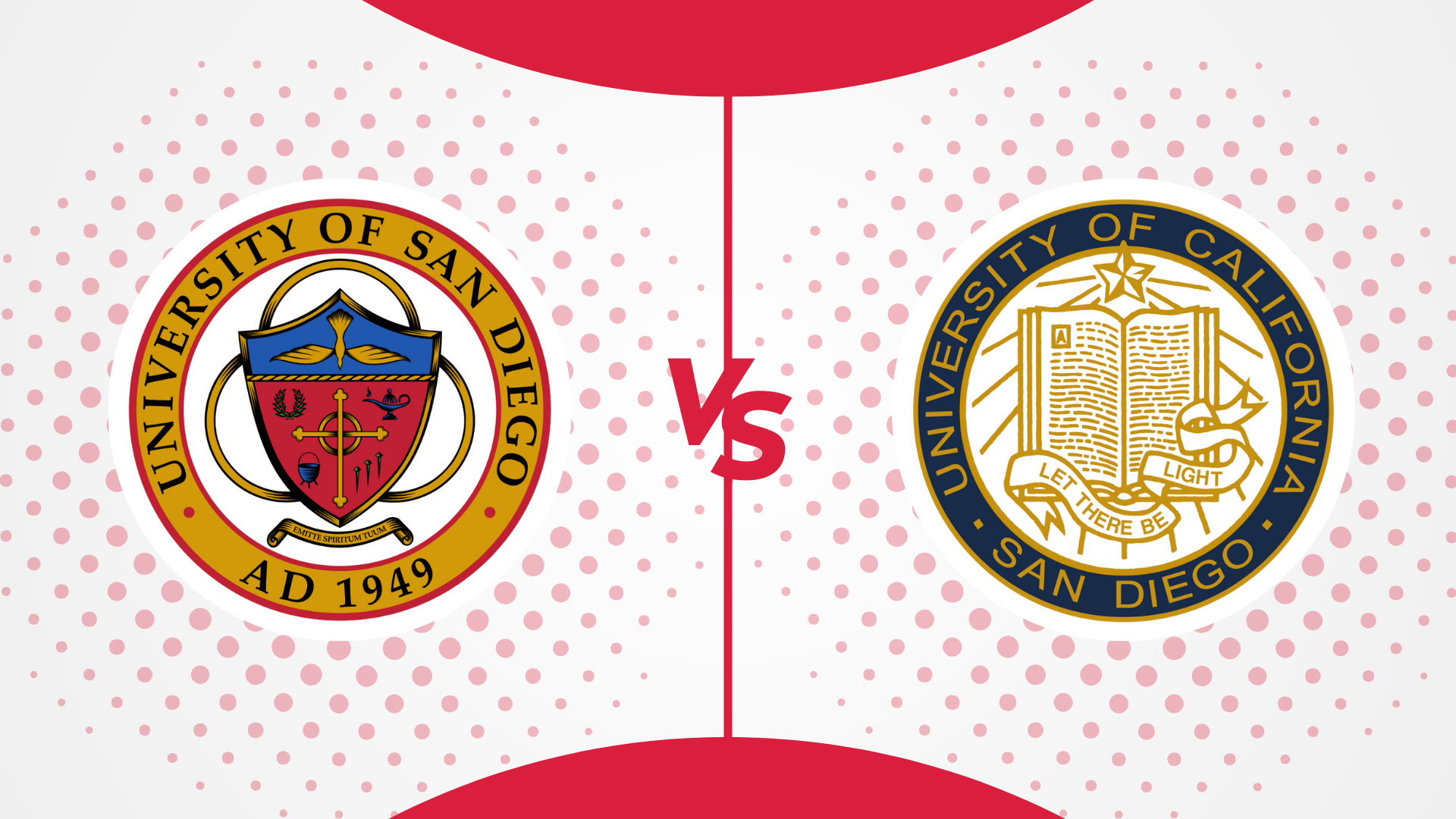
USD vs UCSD: Which one should you choose in 2024?
July 9, 2024 -
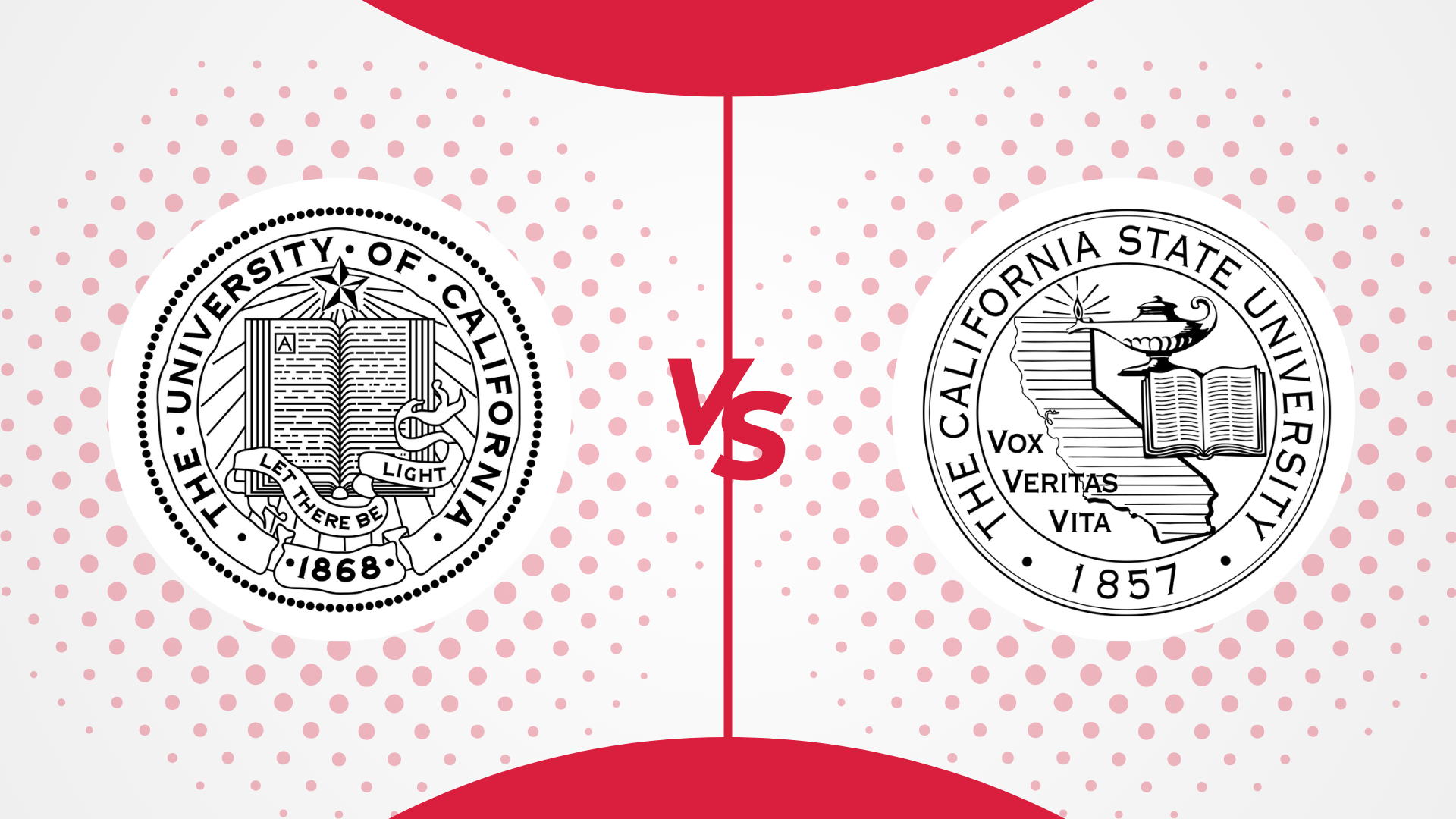
UC vs CSU: Which One is Better in 2024?
July 9, 2024 -
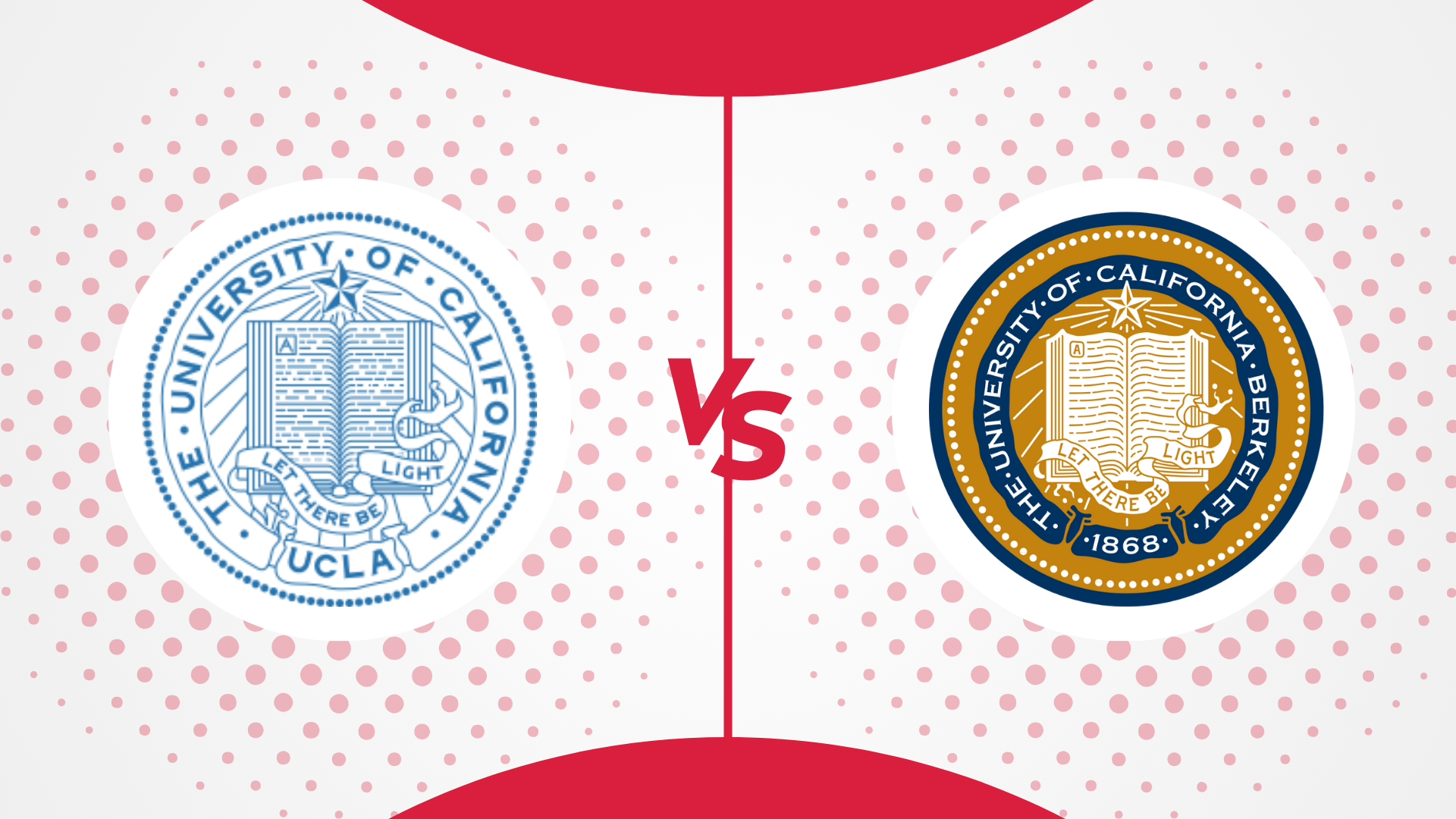
UCLA vs UC Berkeley: Which One is Best in 2024
July 9, 2024 -

University of Arizona vs Arizona State University: Which One is Better in 2024
July 9, 2024 -

Penn State vs UPenn: Which is Better for International Students in 2024
July 9, 2024 -

Northeastern vs Northwestern: Which One is Best in 2024
July 9, 2024 -

Northeastern University vs Purdue University – Which One is Better in 2024?
July 9, 2024 -

Boston College vs Boston University: Which One is the Best in 2024?
July 9, 2024 -

LSU vs UCLA: Which Is Better For You In 2024?
July 8, 2024 -

NYU vs Boston University: Which One Is Better For You In 2024
July 8, 2024 -

USC vs UCLA: Which One Is Better For You In 2024?
July 5, 2024 -
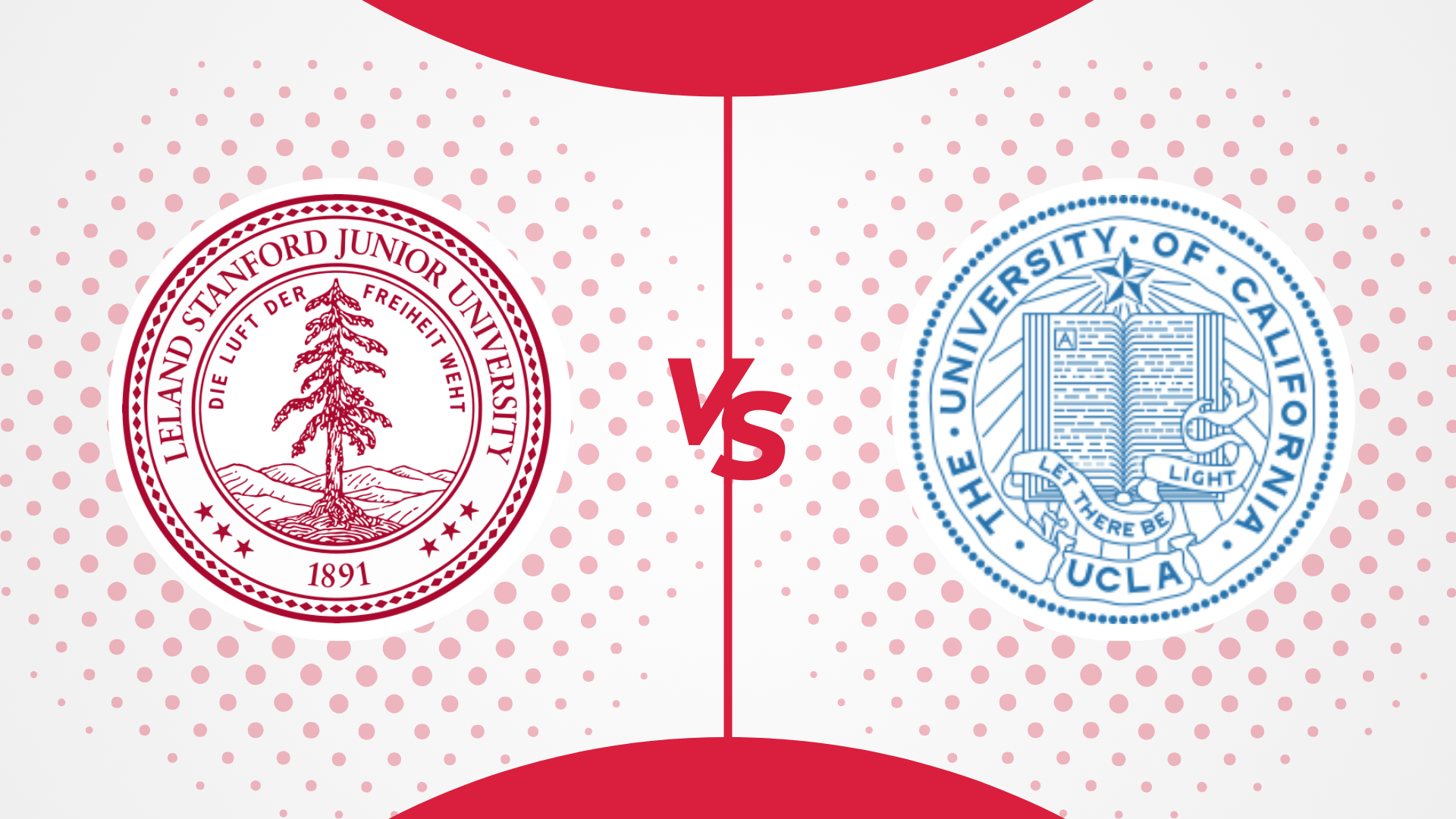
Stanford vs UCLA: Which One is Better For You in 2024
June 28, 2024 -
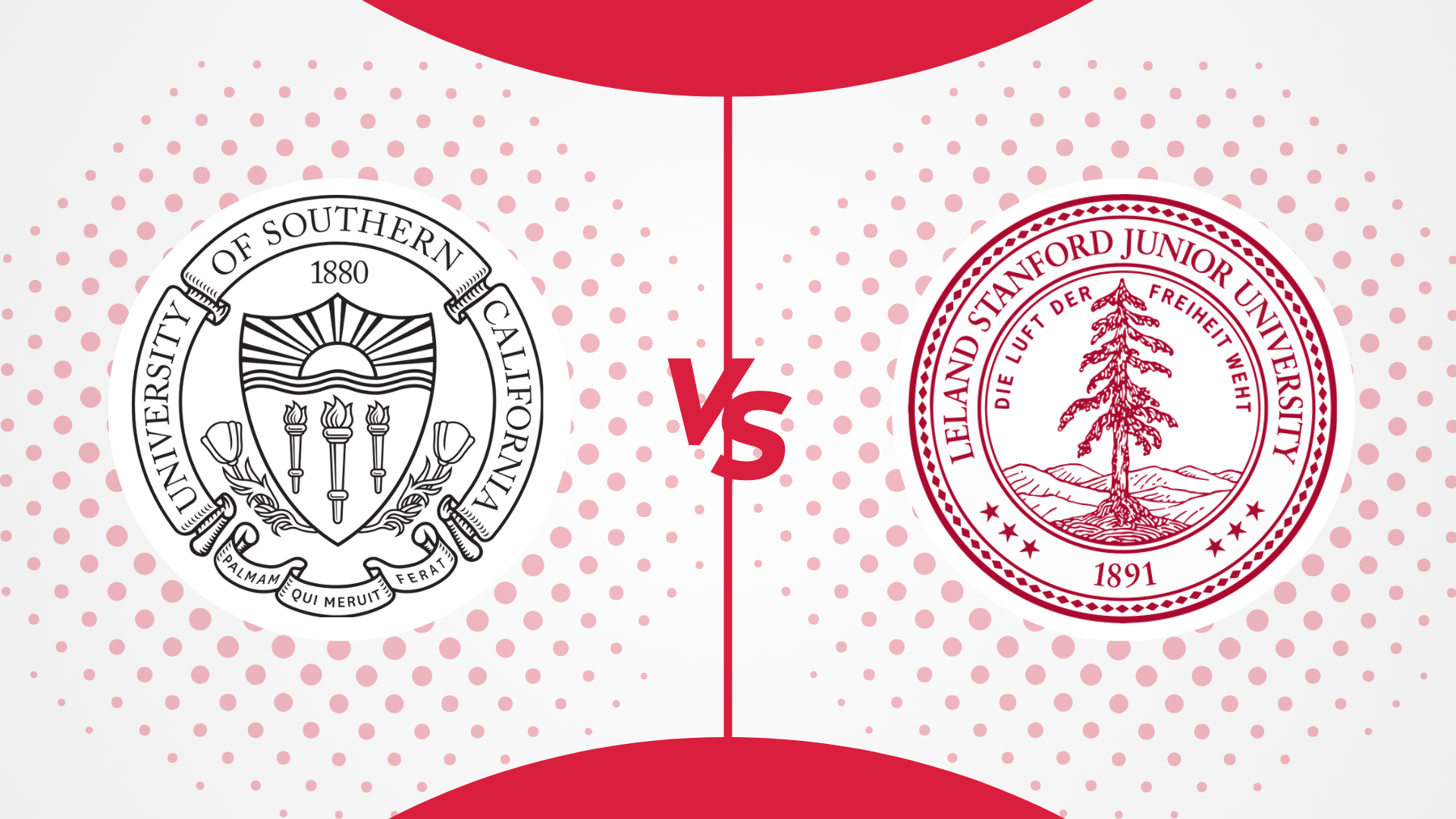
USC vs Stanford: Which One is Better For You in 2024
June 28, 2024 -
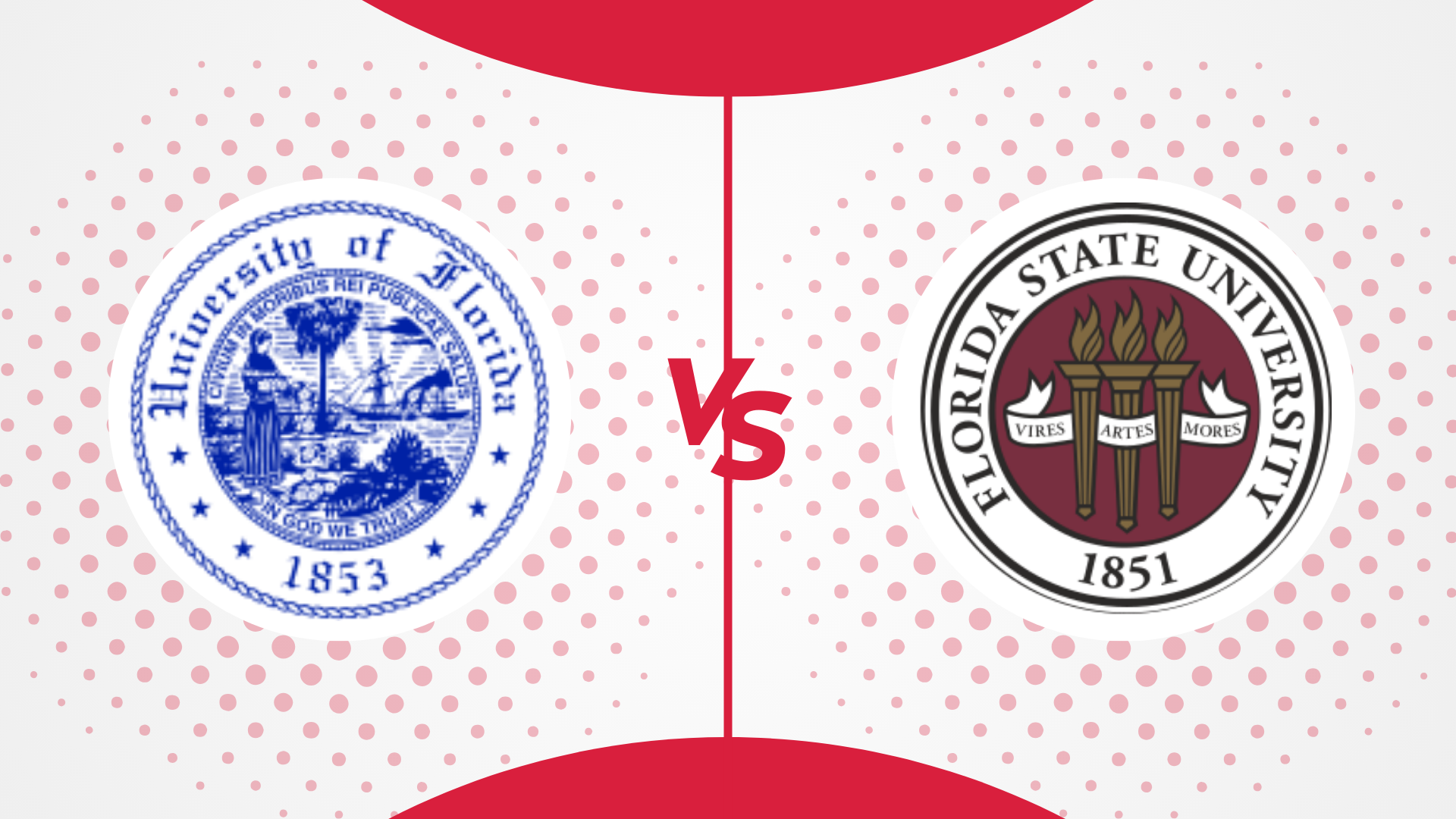
University of Florida vs Florida State University: Which One is Better For You in 2024
June 28, 2024 -

NYU vs Columbia: Which Is Better In 2024?
June 28, 2024 -

Princeton vs Columbia: Which Is Better In 2024?
June 28, 2024 -

NYU vs Cornell: Which One Is Better In 2024?
June 28, 2024 -

Boston University vs Northeastern: Which one is best in 2024
June 28, 2024 -

NYU vs UCLA: Which Is Better For You In 2024?
June 28, 2024
